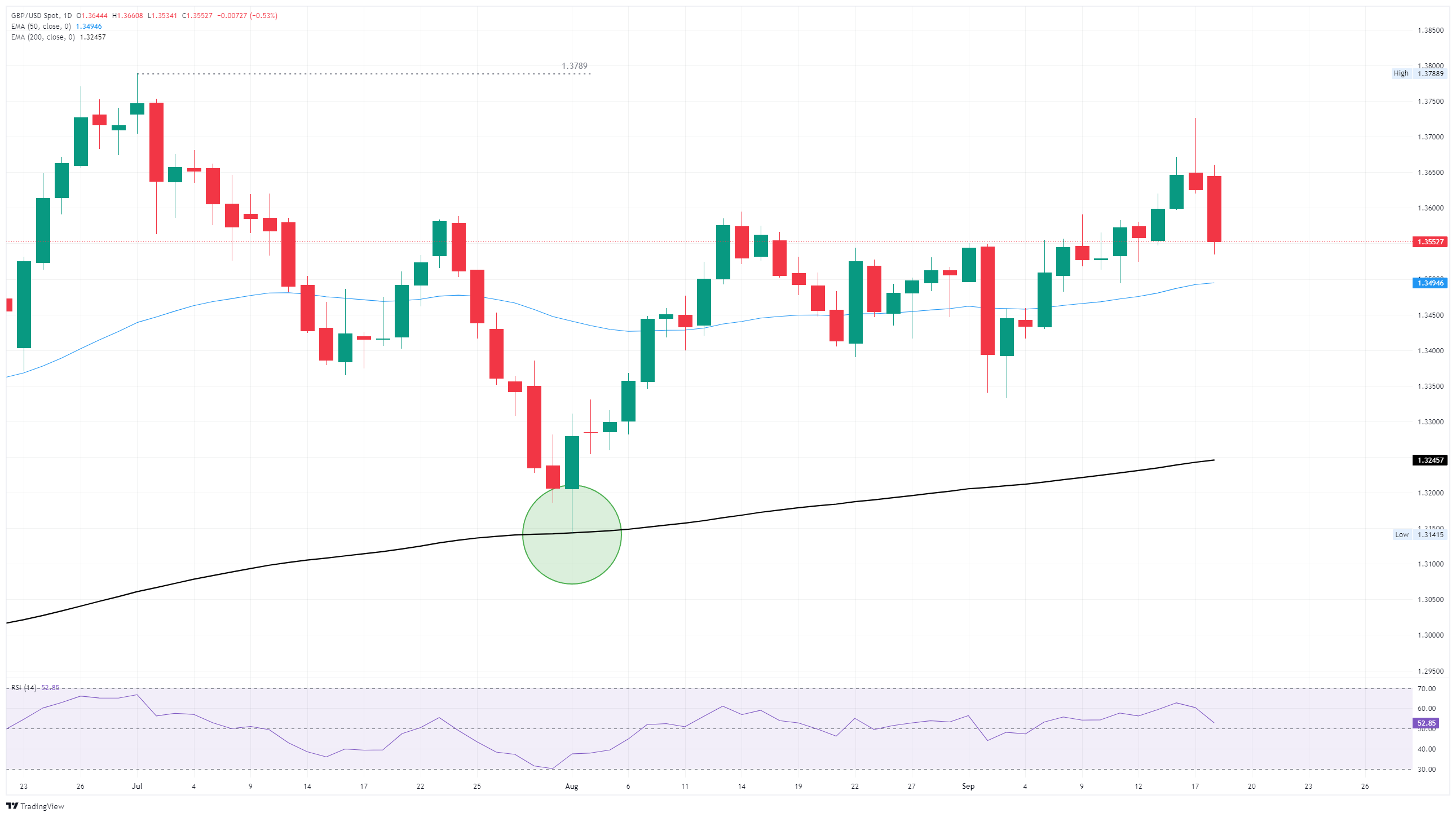GBP/USD sinks after BoE holds rates steady, UK Retail Sales in the barrel
- GBP/USD backslid over 0.5% on Thursday after the BoE stubbornly held rates steady.
- UK inflation continues to be an overarching problem limiting the BoE’s policy toolkit.
- With the BoE hamstrung, inflation and slowing economic activity pose a double-sided issue for the UK.
GBP/USD tumbled backwards on Thursday, falling a little over one-half of one percent and pushing the Pound Sterling (GBP) back below the key 1.3600 handle against the US Dollar (USD) after a brief spat above the major technical level.
The Bank of England (BoE) held interest rates flat in a 7-to-2 vote, and a general uptick in market unease helped keep the Greenback well-bid across the board.
Central bank dust settles, UK Retail Sales up next
UK Retail Sales for August are due on Friday, but the headline figure will provide a mixed bag at best for data watchers. Retail Sales data is not typically adjusted by total sales volume, and high inflation can skew the sales figures to the upside.
Functionally, Retail Sales cannot differentiate between consumers struggling to pay for the same amount of goods with a larger proportion of their paycheque, and consumers properly injecting wage gains into the domestic economy.

GBP/USD daily chart

Pound Sterling FAQs
The Pound Sterling (GBP) is the oldest currency in the world (886 AD) and the official currency of the United Kingdom. It is the fourth most traded unit for foreign exchange (FX) in the world, accounting for 12% of all transactions, averaging $630 billion a day, according to 2022 data. Its key trading pairs are GBP/USD, also known as ‘Cable’, which accounts for 11% of FX, GBP/JPY, or the ‘Dragon’ as it is known by traders (3%), and EUR/GBP (2%). The Pound Sterling is issued by the Bank of England (BoE).
The single most important factor influencing the value of the Pound Sterling is monetary policy decided by the Bank of England. The BoE bases its decisions on whether it has achieved its primary goal of “price stability” – a steady inflation rate of around 2%. Its primary tool for achieving this is the adjustment of interest rates. When inflation is too high, the BoE will try to rein it in by raising interest rates, making it more expensive for people and businesses to access credit. This is generally positive for GBP, as higher interest rates make the UK a more attractive place for global investors to park their money. When inflation falls too low it is a sign economic growth is slowing. In this scenario, the BoE will consider lowering interest rates to cheapen credit so businesses will borrow more to invest in growth-generating projects.
Data releases gauge the health of the economy and can impact the value of the Pound Sterling. Indicators such as GDP, Manufacturing and Services PMIs, and employment can all influence the direction of the GBP. A strong economy is good for Sterling. Not only does it attract more foreign investment but it may encourage the BoE to put up interest rates, which will directly strengthen GBP. Otherwise, if economic data is weak, the Pound Sterling is likely to fall.
Another significant data release for the Pound Sterling is the Trade Balance. This indicator measures the difference between what a country earns from its exports and what it spends on imports over a given period. If a country produces highly sought-after exports, its currency will benefit purely from the extra demand created from foreign buyers seeking to purchase these goods. Therefore, a positive net Trade Balance strengthens a currency and vice versa for a negative balance.
